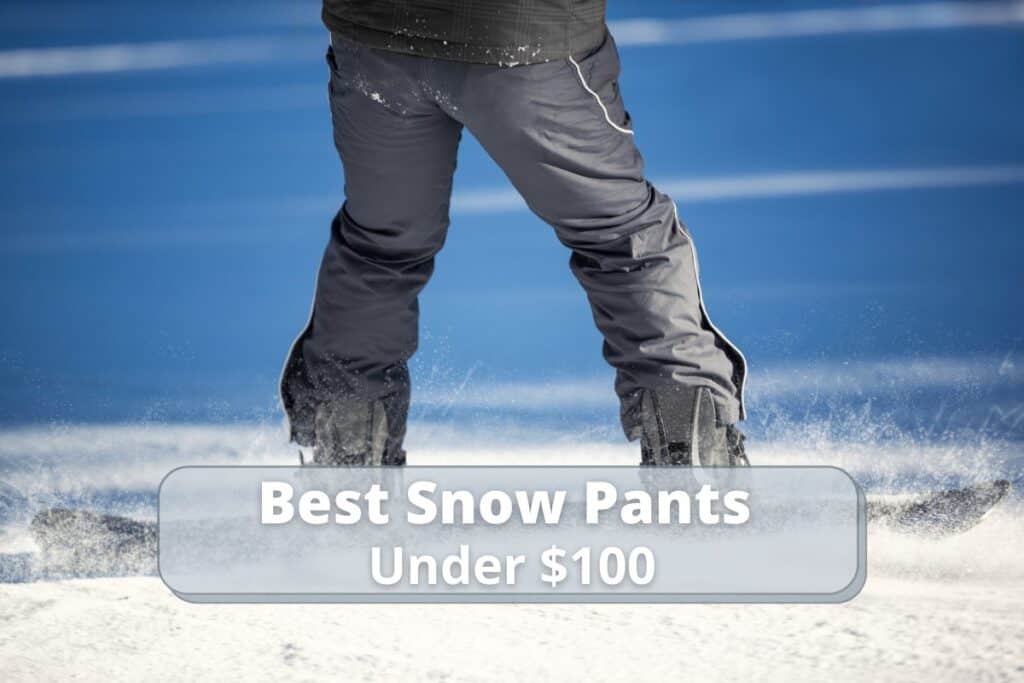Building a strong, durable, epic snow fort needn’t be difficult. You just need the right instructions, so how do you do it?
Our top tips for how to make a snow fort:
- Plan your structure before you start
- Use level ground
- Build with bricks
- Harden your bricks before you build
- Start with the walls
- Use your shovel wisely
- Don’t forget air holes
- Reinforce with ice
- Decorate the fort
Now you can make an awesome snow fort that will be the talk of the street! Keep reading for more actionable information for creating a fun, sturdy snow fort the kids will love.
1. Plan Your Structure Before You Start
The best building projects don’t begin all willy-nilly. Instead, an architect will create a blueprint of what will be.
Well, when you’re building a snow fort, you’re the architect, and you need a blueprint.
Visualize what the snow fort will look like when it’s finished. Then, using a branch, a stick, or even the other end of a shovel, make a rough outline of where the snow fort will go.
If you’re only making a snow fort for the kiddos, then there’s no need for the fort to be gargantuan. You don’t want to cram too many children into the fort at once, because then its structural stability could be at risk.
A large snow fort is also going to be very time-consuming to build, which is not what you want for your first fort. You might never want to build another.
Make one that’s a moderate size to start. You’ll save on time and effort so you have some energy left to enjoy the fruits of your labor.
2. Use Level Ground
Just as an architect wouldn’t start building on anything but level ground, you need to do the same when constructing your snow fort.
If the snow fort is on a slope, then the entire thing is going to turn out lopsided. You’ll spend a lot more time building the fort than you should because you have to accommodate for the angle changes.
Level ground is important, but that’s not your only consideration.
You want to select an area that is adequately covered by trees so the snow fort won’t sit in the sun. If it does, then it will melt in a matter of days, if that!
You also want to avoid snowbanks, as the snow around the fort can collapse, which can create a very risky situation (we just wrote about the dangers of snow forts, so make sure you check that out, please!).
Keep a good distance from the road as well. A snowplow that blasts away snow can kick up the white stuff all over your snow fort, possibly destroying it.
3. Build with Snow Bricks
While you could use hard-packed snow as the basis of your snow structure, that leaves something a little lacking. It also doesn’t feel as satisfying or as safe as packing bricks into place.
How do you make snow bricks? We’ll get into the details on another article, but for now we’ll keep it simple.
As a short preview, the best way to make bricks is to fill a container with snow rather than make each brick individually.
The Tupperware method ensures that each brick is of a uniform shape and size, which is very important when building a snow fort.
I just found these snow bricks molds you can buy on amazon, and they look amazing. I put a couple in my shopping cart to buy for kids, and can’t wait to use them. I do recommend buying at least two so you’re not the only one making bricks.
We can’t stress enough that your fort has to be structurally secure or it’s not safe for an adult or child to use, even for a couple of minutes.
Related Reading: How to Make the Perfect Snow Brick
Snow bricks will help you feel confident in your fort so you can breathe easier when your own children or the neighborhood kids use it.
4. Harden Your Bricks Before You Build
Snow bricks are snow at the end of the day, which means the bricks are susceptible to temperature changes.
Unlike that pile of snow you dug up two days ago, the bricks could begin melting faster since there’s a lot less to them.
Ideally, you should build a snow fort during a stretch of cold days where temps don’t surpass the low 30s.
You may also double the structural integrity of the snow bricks by hardening them overnight.
If you’re going to experience bitterly cold temps, then all you have to do is leave the bricks out in the yard somewhere to get nice and frosty cold.
You can also wet the bricks. We’d recommend using a garden hose on a light mist setting rather than pouring water over the snow bricks, as that could cause them to disintegrate.
Why add water to the bricks? We’ll talk more about this later, but the free water content in snow acts like glue that keeps the snow in place.
The ice that will develop once the water freezes also adds a second layer of defense against melting!
5. Start with the Walls
How do you build a structure like a snow fort? Where do you even begin?
Well, with the walls, of course. You can’t exactly build the ceiling until you’ve got the basic structure of the snow fort down.
We’ve written how to make a snow igloo, and it’s quite a comprehensive guide, so please check that post out before you begin.
Here are some pointers that will come in handy as you get building your snow fort.
Begin building from the back of the snow fort rather than the sides or the front.
Stack the walls unless you’re building a snow igloo. In that case, then you want to curve the walls.
You can create walls by laying one snow brick atop the other. For any openings between the bricks, be sure to pack them with loose snow. The snow should ideally be wet so it acts like cement between real bricks.
Continue building to the ceiling, and then build the entrance when everything else is finished.
Now, we’re sure you’re asking, what about the floor? When do you work on that? Well, the floor kind of comes together on its own.
If you want to sweep it up and make it flat and even, you should do that before you add the entrance, as then it’s a lot harder to get into and out of the snow fort (especially if you’re building it to be kid-sized) at that point.
6. Use Your Shovel Wisely
Your shovel is a useful tool when making a snow fort as much as it is when creating walking paths along your driveway and front entranceway.
You’re not using your shovel in the same way, of course. Rather, the tool comes in handy for smoothing out your newly-built snow fort from the outside in.
If you decide to reinforce the exterior of the snow fort with more snow, then your shovel will make that job really easy too.
Since shovels are usually quite large, make sure you’re not piling on heaping helpings of snow onto the snow fort.
Even if the snow fort is relatively stable to begin with, if you blanket the fort in too much snow, that will change.
The fort can collapse under the additional weight of the snow. Even if no one is inside at that time (which hopefully, they aren’t!), this is still a great loss.
You spent the entire day or perhaps several days working on the snow fort, and now it’s all for naught.
When working with the sharp sides of a shovel, take a similarly careful approach. You don’t want to stab too deeply into the snow or you could possibly destroy the structure of the snow fort.
That too will leave you in the unfortunate position of having to start all over.
7. Don’t Forget the Air Holes in Your Fort
A snow fort is an enclosed structure, but it shouldn’t be 100 percent enclosed. You need to give the occupants breathing room, quite literally in this case.
The entrance and exit, which are probably one-way, are one source of air that you can rely on during your time in the fort, but we recommend a second breathing hole for larger, multi-room snow forts especially.
Just for fun, check out this Huge snow igloo!
If you’d rather be safe than sorry and add a second air hole even to a smaller snow fort, then the ideal place for the whole is at the top.
You only need to create a small, vented area for this that’s no greater than two inches in diameter.
If the air hole is too large, then you’ll let in more than air but lots of cold, blustery winter wind as well.
You can use your shovel to make an air hole or two for your snow fort, so this is yet another instance in which this tool is especially good to have around.
The reason that you need air holes throughout the snow fort is to allow carbon dioxide a place to filter out.
Although we exhale carbon dioxide all day long, that doesn’t mean it isn’t toxic.
Granted, it takes large quantities for the gas to be toxic, but in an enclosed area like a snow fort, it’s very easy for toxic levels to build up.
This is how snow immersion suffocation can occur, which we talked about in our article on the dangers of snow forts.
Snow immersion suffocation or SIS can kill children especially quickly, in about 15 minutes, especially if they’re injured from a snow fort collapse. Adults can succumb to SIS as well, so air holes are ultra-important!
8. Reinforce with Ice
The ice that you used to construct your snow fort should be continually added to regularly. The only exception is if you’re dealing with very cold temperatures like those that are only slightly over freezing.
In that case, then the original coating of ice is sure to last a while. In warmer temperatures, the ice will begin to melt.
Imagine if you made a big project with glue and then held up a hair dryer to the dried glue. The glue will soften and begin melting, dislodging everything you attached to it.
It can be much the same case with your snow fort unless you continually reinforce the ice.
Each day (or so, use your discretion according to the temperature), use a garden hose to gently mist the exterior of the fort.
You shouldn’t pour water over the snow fort, as you could cause the walls or the ceiling to collapse!
Even a heavier water stream from a garden hose could begin to chip away at the structure of the snow fort, so use a light misting of water only.
9. Decorate the Snow Fort with LEDs and/or Food Coloring
You put a lot of time, effort, and hard work into making this snow fort. The kids couldn’t really help with any of the building since it took a lot of heavy lifting, but that doesn’t mean they can’t put their own personal stamp on it.
We recommend you let the kiddos get involved with decorating the snow fort.
Battery-powered LED lights draped over the exterior of the snow fort will create a twinkly, warm atmosphere and add some much-needed illumination when it gets dark at 4 p.m.
Bonus points if you can string some LEDs inside the fort, but don’t risk any structural support to do this.
You and the kids can also use the snow fort exterior as a blank canvas for decorating with food coloring in spray bottles.
The kids can randomly decorate with various hues, write out their names, or try to draw shapes and characters. It’s their choice, but they’ll have fun either way!
Visit Our Winter/Snow Page for More Great Content!
What Kind of Snow Do You Need to Build a Snow Fort?
There are two main types of snow: powdery snow and wet snow.
Powdery snow looks and feels like, well, powder. It is considered dry snow, made when snowflakes fall through the dry, cold air. This type of snow lacks moisture or water, causing it to be hard to build structures with, including snow forts.
Wet snow, on the other hand, has more moisture, allowing it to stick together easily. The free water content of wet snow is about 15%, while powdery snow has less than 3% of liquid water content.
Due to its higher water content, wet snow makes for excellent snow to build snowmen, snowballs, and of course, snow forts.
So, are you completely out of luck if all you have to work with is powdery snow? Can you still build a snow fort?
Thankfully, you can take some additional steps to help the dry snow become more wet and able to build with. Let’s look at how to do this in the next section.
How to Make a Snow Fort with Powdery Snow
If all Mother Nature blessed you with is powdery snow, then you’re not entirely out of luck when it comes to making a snow fort. If you are willing to do some extra work, you can make the best snow fort on the block.
This first step is crucial to planning to make a snow fort with powdery snow. Plan your building to be around some water source, like a garden hose.
To make the dry snow more wet, you will need to add some water to it. Use a gentle water spray, ensuring not to oversaturate the snow. Wet the snow until you can feel the moisture on its previously dry surface, then turn the water off.
Using less water than initially estimated is advisable, as perfecting the snow texture may require some trial and error. While dry snow is impractical for constructing snow structures, overly wet snow is equally problematic due to its excessive drippiness. If the powdery snow disintegrates in your hands when wet, reduce the water content.
Now, you’re ready to start working with the dampened snow.
When you’re prepared to begin building, prioritize constructing the walls. Place a wet snow chunk where you outlined the start of the walls, then layer more snow on top, tightly packing the two sections together. As the wall becomes more defined, adding to it becomes a more straightforward task.
How to Stay Warm When Building a Snow Fort
We all know staying outside in the snow for hours making and playing in your snow fort calls for some good snow gear, especially for kids. Check out our top picks for snow jackets, pants, and boots.
The right clothing will make all the difference and make your snow day that much better!
Final Thoughts
Making a snow fort can be a great way to bring the whole family together and sometimes the entire neighborhood as well.
We hope the information in this guide helps you build a strong, sturdy, appealing snow fort that you’ll be proud of.
Make sure to take lots of photos! The memories will never die but the snow fort someday will, and pictures will help you look fondly back at your winter memories anytime of the year.
For more snow fun, check out “All the Things You Can Do with Snow.”




